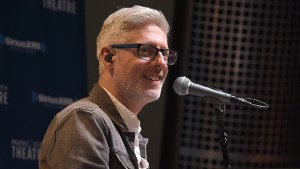The National Eucharistic Pilgrimage is nearing its end and pilgrims of the four routes are nearing Indianapolis, where they will attend the National Eucharistic Congress from July 17-21. They will be joined by the relics of several saints (and a certain Millennial blessed) close to the hearts of US Catholics, and even a reproduction of the Shroud of Turin.
According to the National Eucharistic Congress’ website, the relics will all be housed in a reliquary chapel that was built in the Indiana Convention Center specifically for the Congress. Each day of the Congress, the chapel will be open for the faithful to visit from 12:00 – 6:30 p.m, leaving plenty of opportunity to fit some prayers in between events.
The relics are split into two categories: one is the Patrons of the National Eucharistic Pilgrimage and the other, Patrons of the National Eucharistic Revival and Congress.
Patrons of the Pilgrimage
Each of the four pilgrimage routes was emblazoned with a saintly name: the St. Elizabeth Ann Seton Route, the St. Junípero Serra Route, the St. Juan Diego Route, and the Marian Route. Very fittingly, the relics are an important artifact related to each of these Catholic figures.
St. Elizabeth Ann Seton founded the Sisters of Charity and became a transformative figure in the field of education, building schools and orphanages for the underserved youth of 18th-century New York. Her relics have perhaps the shortest distance to travel, as they are usually housed in the Bishop Simon Bruté College Seminary in Indianapolis.
St. Junípero Serra was a Franciscan missionary who was integral in the development of California’s mission churches, founding 9 church locations on his own. He is largely credited with Christianity’s spread to the Western US, for which he was canonized by Pope Francis in 2015.
St. Juan Diego is best known for witnessing the Marian apparitions of Our Lady of Guadalupe. In 1531, the Blessed Mother instructed him to build a church and then imprinted her own image upon his tilma, which remains one of the most visited and venerated relics in the Catholic world.
Additionally, a relic of the Veil of Our Lady from the Chartres Cathedral in France will be there. This is a piece of a veil called “Sancta Camisa,” which has been venerated since at least the 10th century. Reputedly a piece of a veil worn by the Blessed Mother herself, scientific examination of the artifact discovered pollen originating in the 1st-century Jerusalem region.
Patrons of the Revival and Congress
There will be three additional relics belonging to the patrons of the National Eucharistic Revival and Congress as well. The patron of the revival is St. Manuel González García, a Spanish Civil War era bishop who was devoted to the Eucharist. St. Manuel will be present in several relics of his bone, blood and hair, contained in reliquaries. They were sent to the Congress by the Eucharistic Missionaries of Nazareth, the order St. Manuel founded.
The Patron of the Eucharistic Congress is St. Paschal Baylón, a shepherd turned Franciscan who is remembered for his unfaltering belief in the Real Presence. This 14th-century saint will be present by means of his mummified finger, which will be on display alongside the other relics for veneration.
Last but certainly not least is Blessed Carlo Acutis, who is the Special Intercessor of the Revival. Blessed Carlo’s life was short, but notable for his devotion to the Eucharist and his efforts to accumulate documentation of all Eucharistic miracles throughout Church history, as well as his bravery in the face of leukemia. Before he succumbed to the illness at the age of 15, he was known to offer all his suffering for the sake of the Church. His canonization has been approved and he is expected to become the first Millennial saint in 2025.
Along with Bl. Carlo Acutis’ relics, a display of his Eucharistic Miracles Exhibit will be erected so attendees can become more familiar with his life’s work.
Shroud of Turin
If such a dazzling variety of holy relics was not an interesting enough draw for the faithful of the National Eucharistic Congress, there will also be a full-sized replica of the Shroud of Turin on display. The Shroud is a length of burial fabric that was imprinted with the form of a man who had been crucified and executed with all the same wounds recorded in the biblical narrative of Christ’s Passion.
For centuries the Shroud of Turin has spurred thought and devotion. While not precisely proven to be the real burial shroud of Christ, efforts to disprove the Shroud have not been successful, leaving those who witness to decide on its authenticity based on faith.
The display of relics planned for the National Eucharistic Congress is worth a visit for its own sake, but there are tons of other activities and events for the faithful to take part in from July 17-21 at Indianapolis. Visit the National Eucharistic Congress’ official website to see its full schedule.



